Have you ever eaten Scandinavian food? If you are like me, you have to stop and think about the question. I was educated in the US, where studying world geography and other cultures wasn’t a big priority. But, to be fair, maybe I wasn’t paying attention.
I wasn’t even sure if I could name the countries, much less the people, associated with the word Scandinavia. But Mimi Sheraton, the author of my favorite food book (and our Guidebook), 1,000 Foods to Eat Before You Die, had me covered. It’s Denmark and the Danish, Finland and the Finnish, Norway and the Norwegians, Sweden and the Swedish.
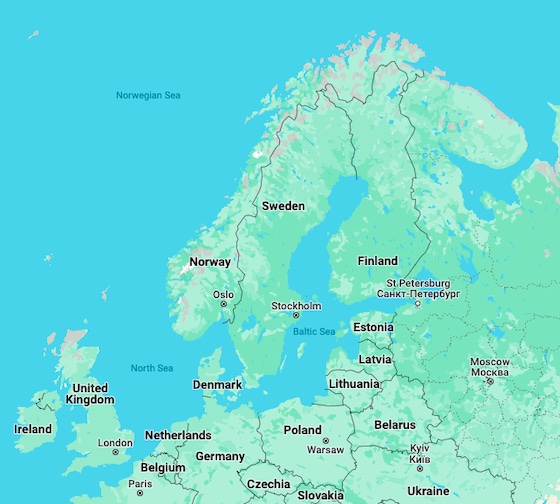
Map data copyright (c) 2024 Google
If you have been reading The Cook and the Writer for the last few weeks, you have learned most of what we know about Sweden, specifically Stockholm. You have also learned that I am a glutton and a bit of a maniac for köttbullar, aka Swedish Meatballs. While their meatballs are fantastic (I’ve heard some people add cardamom to the mix), the Swedes create and eat so much more.
We were only in Sweden for three days, but we were lucky that both of our hotels included a huge breakfast buffet with an unbelievable array of Swedish foods. I used the word “buffet”, but they were really like a smörgåsbord.
Smörgåsbord
The smörgåsbord is a combination of two Swedish words. The first part (smörgås) means “open face sandwich” and the second (bord) means “table”. Breakfast was an all-you-can-eat affair for a set price – ours was included in the price of our room. The smörgåsbord was popular in the US in the 1950’s and 60’s, but was unfortunately replaced with something called The Golden Corral.


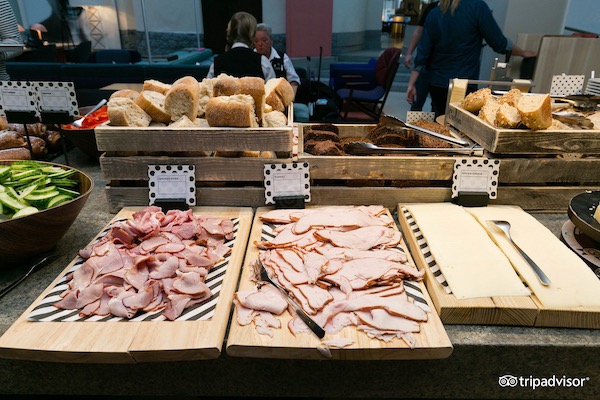
Some typical selections like we saw on breakfast smörgåsbords in Stockholm.
Images from tripadvisor.com
Plätter
While I was enjoying my breakfast of meatballs, Mike returned to the table with tiny round pancakes. I couldn’t believe it. There was so much to choose from and he picked pancakes! Evidently these aren’t your mother’s pancakes, these are Swedish plätter.
Mimi Sheraton says they are “[a]mong the world’s most enticing pancakes. Be they French crêpes, Italian crespelle, or American flapjacks, by far the lightest and most delicate are the tiny round plätter of Sweden.” Mimi says they are far too precious to drown in syrup, but a bit of confectioners’ sugar and a topping of lingonberry preserves is the way to go.
Mike would never want to disappoint Mimi, so he did exactly as she suggested.
Lingonberries
As I said above, these berries are great with pancakes. They can also be served alongside meatballs, goose, duck, game, and pork. Ligonberries look a lot like cranberries, but are tiny and bright red with a winey flavor. They are extremely tart. To make them edible, you have to add sugar.
You have probably had lingonberry compote at IKEA… alongside what else?
Meatballs, of course!
Crispbreads
The breakfast buffets had an astounding number of breads to choose from. Most of these would be known as knäckebröd or crispbreads. The original crispbreads only had four ingredients: unsifted rye flour, yeast or sourdough starter, salt, and water. These breads were dense and almost flat and had an incredible shelf life.
Originally they were big dimpled wheel shapes with a center hole which allowed them to be strung up on a pole. This allowed air to circulate between the slices, keeping them fresh longer. With modern day preservatives this is no longer necessary, but the tradition of the center hole remains. We even had a display like this on our breakfast buffet.
Fortunately, crispbreads have come a long way from just four ingredients, and you can now find them all around the world.
Smörgås
While I didn’t eat a smörgås (open-faced sandwich) at breakfast, there were plenty of things there to make one. Cheese, ham, smoked salmon, crispbreads, onions, cucumbers, etc. I did get a smörgås one day for lunch and it was delicious. It was a Shrimp Skagen (recipe below) that I shared with Mike. Smögås are popular both in Sweden and Denmark (where they are known as smørrebrød).
Smörgås are sometimes ordered in courses of two, three or four to a meal, depending on their size, with a fish course arriving first followed by meats. If you want variety, there is a restaurant in Copenhagen called Ida Davidsen that has a menu of over 250 types of small sandwiches to try. What’s not to love?
Good to know
When you travel to a new place do you look at videos on YouTube to get some ideas on what to do or not do in a new place? Before going to Stockholm I watched one of those “Don’t Do This In Sweden” videos and I remember two things:
- Do not ask a Swede about IKEA. They do not want to talk about it.
- Do not do your impression of the Swedish Chef.
I didn’t do either, but I can do a really good Swedish Chef.
Wrap-up
So I’ve given you just a tiny, tiny taste of Swedish food, but there’s so much more to love. I didn’t touch on the sweets, the yeasted breads, the pastries, the hasselback potatoes, the crayfish or the pickled vegetables and fish. Don’t get me started on their love of hot dogs. Google “sauna sausage” if you need a new cooking skill.
But please, please don’t tell your children that they eat Dancer, Prancer and their friends Comet and Cupid.
Until next time / Até a próxima vez
Mary
The Cook
Two Swedish food recipes to try
We ate a toast skagen on our last day in Stockholm. Since then, we’ve made it twice back at home.
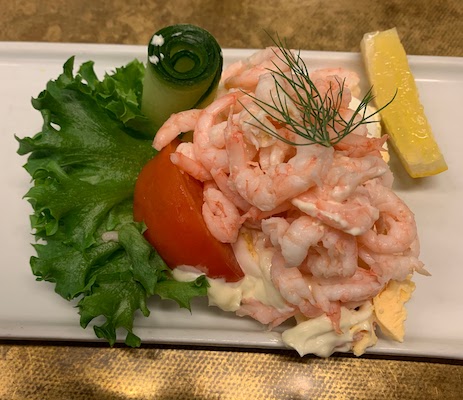
Toast Skagen aka Swedish Shrimp Toast
Ingredients
- 1/4 cup small bunch dill
- 1/4 cup chopped red onion
- 12 oz. bag frozen cooked peeled, deveined, tail-off small shrimp, thawed, preferably North Atlantic
- 1 each lemon
- 3 Tbsp. mayonnaise
- 2 Tbsp. crème fraîche or sour cream
- 1/4 tsp. kosher salt, plus more
- freshly ground pepper
- 2 Tbsp. unsalted butter
- 4 slices white bread, such as Pepperidge Farm or brioche buns
- 4 tsp. bleak fish or whitefish roe, optional
Instructions
- Finely chop tender sprigs from ¼ small bunch dill to yield ¼ cup.; place in a large bowl. Set some larger sprigs aside for serving.
- Finely chop ¼ medium red onion (you should have about 3 Tbsp.) and add to bowl with dill.
- Thoroughly pat dry one 12-oz. bag frozen cooked small shrimp, thawed, with a kitchen towel or paper towels. Coarsely chop half of the shrimp. Place all shrimp in bowl with onion and dill.
- Using a microplane, finely grate zest of 1 lemon into bowl. Then cut lemon in half and squeeze juice of one half through your hand or a fine-mesh sieve into another small bowl; you should have 1 Tbsp. Add lemon juice to bowl with shrimp and mix gently with a rubber spatula to combine. Cut remaining lemon half into 4 wedges and set aside for serving.
- Add 3 Tbsp. mayonnaise, 2 Tbsp. crème fraîche, and ¼ tsp. kosher salt to shrimp; mix gently to coat. Season with freshly ground black pepper and more salt if needed. Cover with plastic wrap or transfer to an airtight container and cover. Chill at least 30 minutes and up to 1 hour.
- When ready to serve toast, melt 2 Tbsp. unsalted butter in a large skillet over medium-low heat. As soon as butter is sizzling, arrange 4 slices white bread in pan and cook, turning a few times to allow both sides to absorb some butter, until golden brown, about 4 minutes.
- Transfer toast to plates and top with shrimp salad. Spoon 1 tsp. bleak fish or whitefish roe (if using) over each toast and top with reserved dill leaves. Serve with reserved lemon wedges for squeezing over.
I found this recipe after our trip. These are sinfully delicious!
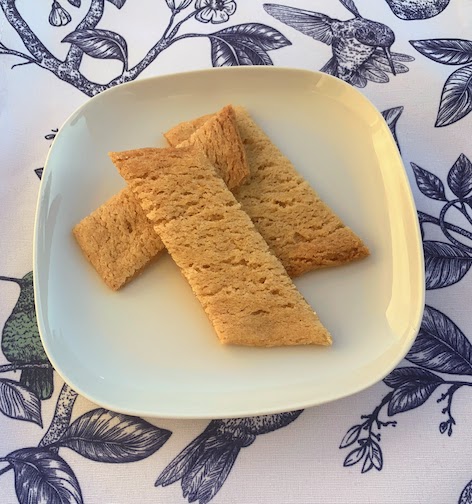
Swedish Caramel Cookies
Ingredients
- 7 ounces unsalted butter at room temperature, 200g/14 tablespoons
- 1 cup sugar 200g
- 0.33 cup light corn syrup 100g
- 1.5 teaspoons vanilla extract
- 2.5 cups flour 300g
- 1 teaspoon baking soda
- 1 teaspoon kosher or flaky sea salt
Instructions
- Line two baking sheets (approximately 13×17 inches or 33x46cm) with parchment paper.
- In the bowl of a stand mixer fitted with the paddle attachment, or in a large bowl using a wooden spoon or spatula, mix the butter, sugar, corn syrup, and vanilla together on medium speed, beating it until it’s soft and creamy, about 3 minutes, stopping the mixer midway to scrape down the sides.
- In a medium bowl, whisk together the flour, baking soda, and salt. With the mixer on low speed, gradually add the flour mixture to the butter mixture, mixing until it’s well combined.
- Lightly flour the countertop and scrape the dough onto the counter, kneading it gently until it’s smooth. Divide the dough into four equal parts.
- Roll each portion into a log that’s 12 inches (30cm) long. If the dough cracks lengthwise while you’re rolling it, roll the dough a little toward you and use your thumbs to coerce the dough into the crack, then finish rolling the log, easing dough back into the crack as you go. Don’t worry if the logs are not perfectly smooth. They’re going to spread quite a bit when baked.
- Place the four logs of dough evenly spaced apart on the baking sheets, then press the logs of dough down to flatten them so they’re about 1/2-inch (1cm) thick and 1 1/2 inches (3,5cm) wide. Make sure there’s at least 2 inches (5cm) of space between each log and they’re at least an inch (2,5cm) away from the edges of the pan*.
- Refrigerate the dough on the baking sheets for 30 minutes. Preheat the oven to 350ºF (175ºC) and adjust the racks in the oven to the top and bottom third of the oven. (If you want to bake them later, cover them with kitchen towels and keep them in the refrigerator.)
- Bake the cookies, rotating the baking sheets as well as switching them on the racks, from top to bottom, midway during baking. Bake until the dough is golden brown across the top with browned edges, 16 to 18 minutes.
- While the cookies are still warm, use a metal pastry scraper, or a knife that you don’t really care too much about (since you’re cutting on metal), and cut the flat, former cookie logs diagonally and crosswise (rather than lengthwise) in half, then cut each half diagonally into four cookies, so you get 8 cookies per log. Transfer the cookies from the baking sheets to a cooling rack. Cool completely.
- Storage: The cookies can be stored in an airtight container for up to three days.
- *Technically, 1 inch = 2.54cm, but those are approximations. No need to be hyper-exact, but until everyone decides on one system of measurement to use, we’re all doing our best to explain things for a global audience…as well as keeping our sanity / persnicketiness at a manageable level, myself included. – DL
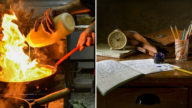
What new food did you learn to love while traveling? Give us some suggestions in the comments below or via the Contact Us form.
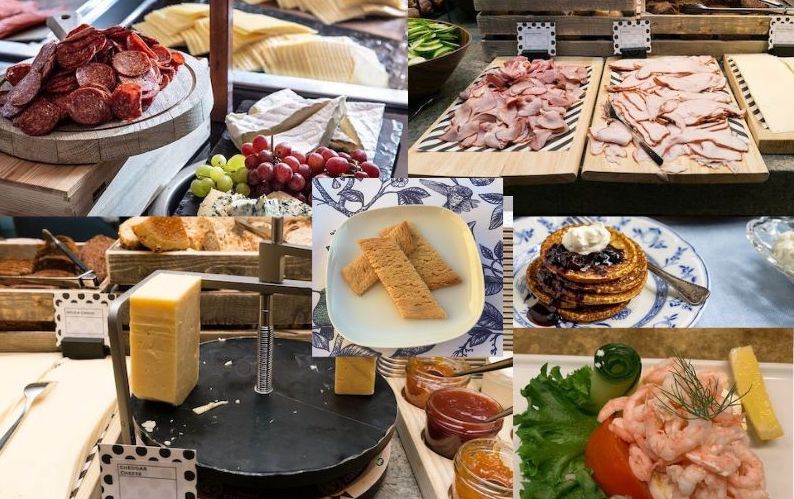
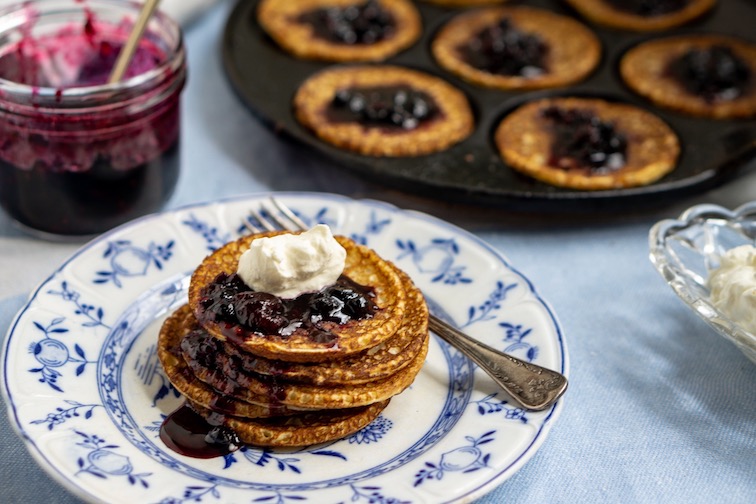

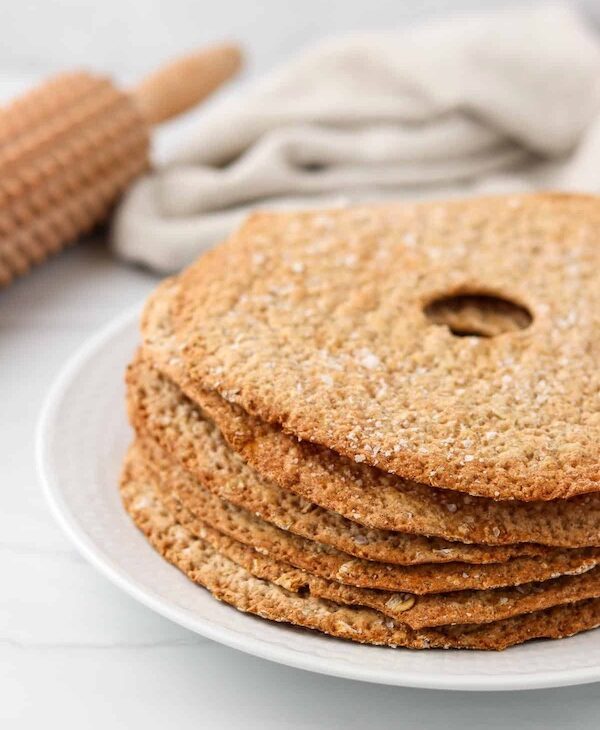

Good!!
Having spent time in both Sweden and Denmark (Holland too) I can relate to your positive reaction to the food, especially breakfast. One of my favorites in Sweden was the smoked salmon, great breakfast treat with the crusty bread.
MY fave was in Germany–can’t remember what it was called but they brought this tool to your table ;it had a specific kind of cheese on a rotating cylinder that vwas heated and you scraped the cheese on crusty bread with fried potatoes–omg yum!!
Madaline, that sounds so good. Melty cheese, crusty bread and fried potatoes may be my request for a last meal. I’ll have to be on the lookout for it the next time I’m in Germany. Thanks for sharing.
Mary
MY fave was in Germany–can’t remember what it was called but they brought this tool to your table ;it had a specific kind of cheese on a rotating cylinder that vwas heated and you scraped the cheese on crusty bread with fried potatoes–omg yum!!
Mary, you’ve captured the swedish breakfast perfectly. Our favorite meal there was always breakfast, so many options. It kept us full until Fika in the afternoon. LoL. FYI, I always have a bag of swedish meatballs in my freezer from IKEA (horrors) Lol
Oh Alice, you are too kind. We really did love the breakfast in Stockholm. Better than that we loved the city. I am definitely going to go back and will want to know your opinion about where we should go and what we shoud see. Please tell Earl hello for me.
Mary
What a delightful and interesting tour of tasty foods on your trip to Sweden. All sounds delicious and a fun experience. Bon Appetit…..Sue and Eddie
Hey Sue,
Thanks for your comment. We really loved Sweden and hope to return some day. What a beautiful country. Give Eddie a hug from me.
Mary
Hej! I love reading about your culinary adventures! Tack!
Take care,
Nan
Dang Nan I had no idea you were a native speaker. We miss seeing you. Maybe someday we will meetup again. Fingers Crossed!
Mary
Yum!!! Can’t wait to try the recipes . . . Well, to ask Sarah to try them for me!!
Beijinhos,
David
Hey David. The Skagen is so easy and tiny shrimp is easily found here in Portugal. If you want to try the cookies I have plenty of corn syrup that I can bring to you. I found it at the Asian store in Martim Moniz. The cookies really are delicious.
Mary